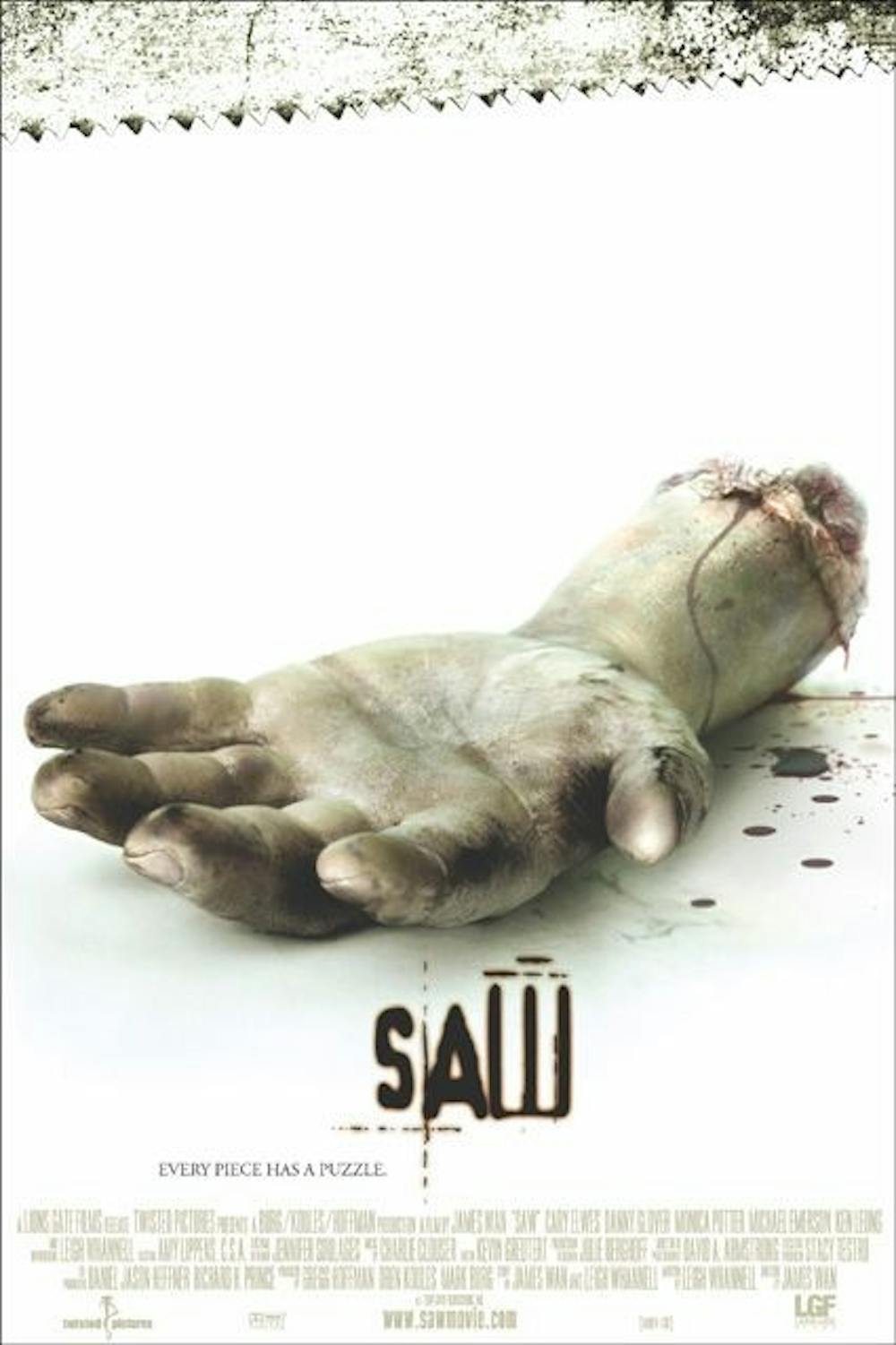If you were to take a look at the list of the highest earning horror movie franchises of all time, you would not be surprised to see many of the classics ranking among the top 10. “Halloween,” “Friday the 13th,” and “Nightmare on Elm Street” all make the list, but the franchise that lies at the top of the list may be surprising.
The franchise in question is “Saw,” which is set to celebrate its 10th anniversary by screening the theatrical re-release of the original film on Halloween.
On the surface, it may seem like just another series of big studio films due to its reputable following, however, looking at the first film's humble beginning it was clearly the origin of a cult following and has had a massive impact on the landscape of today's horror films.
Australian filmmakers Leigh Whannell and James Wan came up with the concept for the film in the early 2000s, after finishing film school. Whannell wrote the script, and the duo then presented the film to various financiers in Australia. This led to a very short-lived deal with a studio in Sydney, Australia. On their agent's advice, the two began presenting the film to American studios. Whannell paid for a short film based on a scene from the the script to be made in two days, (which would later become the iconic reverse bear trap scene) to attract the interests of studios.
Once they arrived in the U.S., Whannell and Wan met with producer Gregg Hoffman, who was so impressed with the script he showed it to his partners. Hoffman and his partners drew a second mortgage on their office to provide the duo with $1.2 million to create the movie.
Shooting for the film lasted only 18 days, with a budget of only $700,000. Because of the limited budget, and the casting of actors Carey Elwes (of “Princess Bride”), and character actor Tobin Bell, pressure was put on Wan to get the footage he needed in a limited number takes. When the editing process began, he realized he did not do this successfully. To compensate, Wan decided to add the surveillance footage and still photographs that would eventually make the film so effective.
The film premiered at the 2004 Sundance Festival and saw a wide release that October. It earned over $55 million and spawned seven sequels (with an eighth currently in the works). The franchise as a whole has earned more than $800 million worldwide.
More so than anything, if you take a step back and look at how the landscapes of horror films have changed in the years since this film’s release, it is clear that the film is absolutely iconic.
The franchise is the poster-child for the ever popular 'low-risk/high-reward' style of film-making. While it can be compared to 1999’s sleeper hit “The Blair Witch Project,” “Saw” is more accurately a modern-day example of a film like Tobe Hooper’s 1974 cult classic “The Texas Chain Saw Massacre,” which many think of as a catalyst for the popularity of slasher flicks in the late 1970s. Hooper's film, which had a budget of less than $300,000, went on to earn more than $30 million at the box office and spun off into four sequels, a reboot and a prequel.
Similar to how “The Texas Chain Saw Massacre” would become a landmark genre film and help inspire numerous slasher films for years after its release, the “Saw” franchise is responsible for inspiring one of the most popular sub-genres of horror films ever — what some call “torture porn.” The franchise is known for its focus on disgusting and disturbing traps that the characters have to do unspeakable things to escape from.
Films such as Eli Roth’s “Hostel,” along with a long list of independent titles that can be found on Netflix, all took the same general style. While it certainly isn't for everyone, the genre can provide a fun endurance test for viewers and certainly makes for a fun, trashy film watching experience.
One aspect of the "Saw" films that always fascinates me, is the complex timelines that run through the series. While the first three films are linear, the remaining four play around with the concept of time, with some films taking place before or during the films that were released before them. While some fans absolutely hated this concept, it was an effective and easy way to make each film relevant, while still keeping them connected to the other entries in the franchise.
I've always been a fan of all the "Saw" movies, perhaps because of the memories of watching each film with my dad and geeking out over how each fit into the canon of the franchise. I’m really looking forward to seeing the film that started it all in theaters, and experiencing the drama again as a young adult rather than as a tween. As the franchise’s tagline states, “If it’s Halloween, it must be Saw.” While I know I am in the minority of people who feel this way, I love the idea of having a Saw film in theaters over this Halloween weekend, even if it isn't new.
Find a showing of "Saw: The 10th Anniversary" here.
Reach the reporter at seweinst@asu.edu or follow on Twitter @S_Weinstein95
Like The State Press on Facebook and follow @statepress on Twitter.





